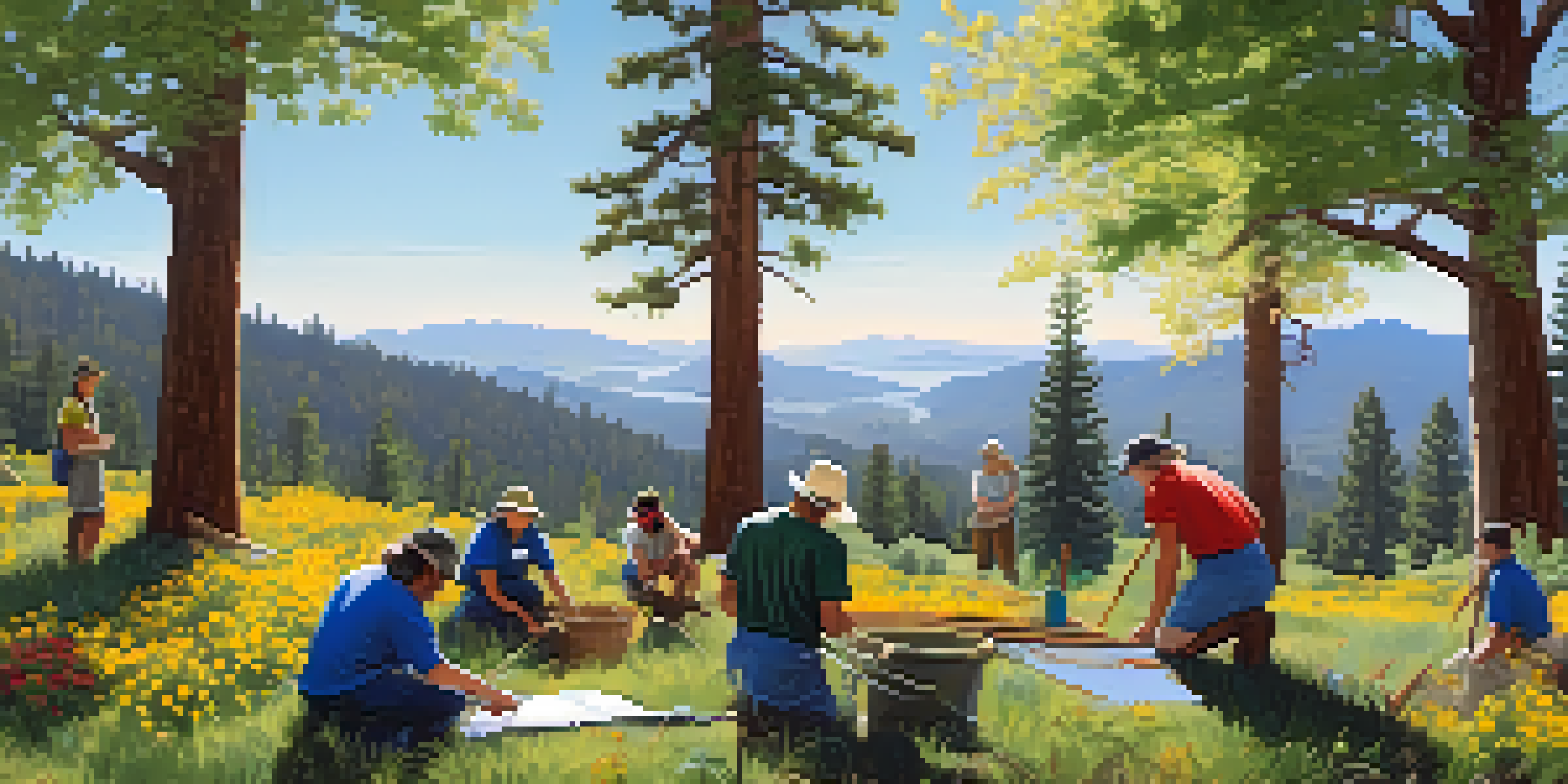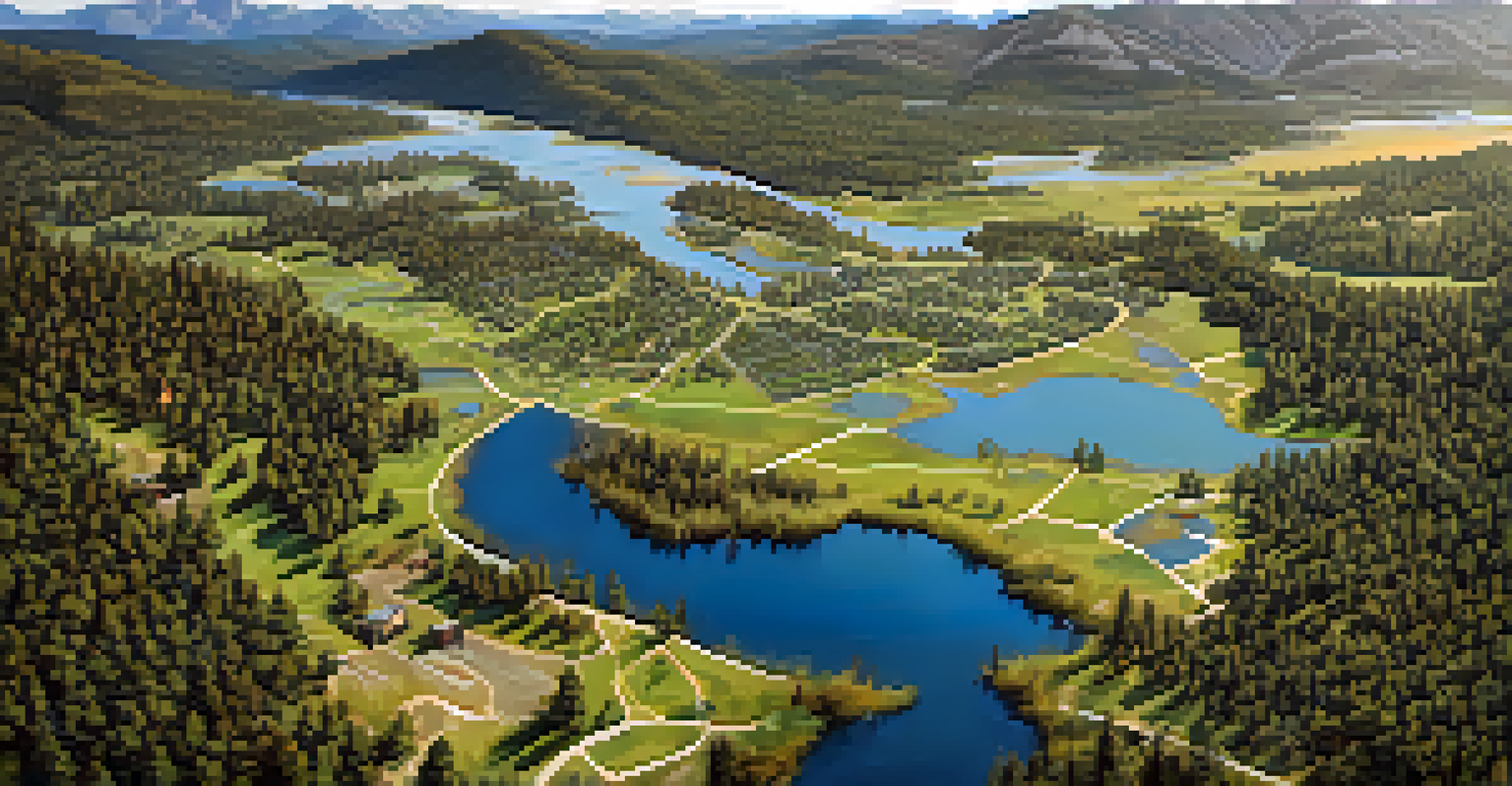Innovative Approaches to Conservation in Big Bear Valley

The Importance of Conservation in Big Bear Valley
Big Bear Valley is a stunning area known for its rich biodiversity and picturesque landscapes. However, the region faces various environmental challenges, making conservation efforts crucial for preserving its natural beauty. Protecting the ecosystem not only safeguards wildlife but also ensures sustainable recreational opportunities for future generations.
The environment is where we all meet; where we all have a mutual interest; it is the one thing all of us share.
By understanding the delicate interplay between human activity and nature, we can develop effective conservation strategies. These strategies are essential not only for maintaining the valley's ecological balance but also for supporting local economies that rely on tourism and outdoor activities. When we prioritize conservation, we foster a healthier environment for all.
Ultimately, effective conservation in Big Bear Valley is about building a legacy of stewardship. Engaging the community and local stakeholders in conservation initiatives can lead to innovative solutions that benefit both people and nature. The journey toward sustainability starts with a collective commitment to protecting this unique landscape.
Community Engagement: A Key to Successful Conservation
Community involvement is at the heart of innovative conservation in Big Bear Valley. When locals actively participate in conservation efforts, they gain a deeper appreciation for their environment and become passionate advocates for its protection. This engagement can take many forms, from organized clean-up events to educational workshops about local ecosystems.

One successful example is the establishment of citizen science programs that empower residents to monitor wildlife and plant populations. These initiatives not only bolster data collection for conservation projects but also foster a sense of ownership among community members. When people see the direct impact of their contributions, it inspires ongoing participation.
Community Drives Conservation Success
Active community engagement enhances conservation efforts by fostering appreciation and ownership of local ecosystems.
Furthermore, collaboration between local organizations, government agencies, and residents can lead to creative solutions tailored to the valley's unique needs. By pooling resources and knowledge, the community can address pressing environmental issues effectively. This united approach enhances the overall resilience of Big Bear Valley's ecosystem.
Harnessing Technology for Conservation Efforts
In today's digital age, technology plays a pivotal role in conservation efforts. In Big Bear Valley, innovative tools such as drones and remote cameras are being used to monitor wildlife habitats and track changes in land use. These technologies provide valuable data that can inform conservation strategies and ensure that actions are effective.
The Earth does not belong to us: we belong to the Earth.
Another exciting advancement is the use of mobile applications that engage citizens in reporting environmental issues, such as litter or wildlife sightings. This real-time data collection helps conservationists respond quickly to emerging problems. When technology and community come together, the results can be transformative for the ecosystem.
Additionally, geographic information systems (GIS) are helping planners visualize environmental impacts and make informed decisions. By analyzing spatial data, stakeholders can identify critical areas for conservation and prioritize their efforts. Embracing these technological innovations can significantly enhance the effectiveness of conservation initiatives in Big Bear Valley.
Restoration Projects: Reviving Natural Habitats
Restoration projects are vital for rehabilitating ecosystems that have been degraded or disrupted. In Big Bear Valley, efforts to restore wetlands and forests are underway, promoting biodiversity and improving water quality. These projects often involve planting native vegetation and removing invasive species, which can help to rejuvenate the landscape.
One notable initiative is the reforestation of areas affected by wildfires. By carefully selecting native tree species, conservationists aim to restore natural habitats while enhancing the resilience of the forest against future fires. Such efforts not only benefit wildlife but also contribute to the overall health of the ecosystem.
Technology Enhances Conservation Efforts
Innovative technologies, like drones and mobile apps, play a crucial role in monitoring wildlife and engaging citizens in environmental protection.
Community volunteers play a significant role in these restoration projects, providing hands-on support and fostering a connection to the land. This collaborative spirit not only accelerates restoration efforts but also instills a sense of pride among participants. Together, they contribute to the long-term health and beauty of Big Bear Valley.
Sustainable Tourism: Balancing Recreation and Conservation
Big Bear Valley attracts countless visitors each year, making sustainable tourism a critical aspect of conservation. By promoting eco-friendly practices, local businesses can help minimize the environmental impact of tourism while enhancing visitor experiences. This balance is essential for preserving the valley's natural beauty for generations to come.
One approach is to encourage visitors to participate in conservation activities, such as guided nature walks or volunteer programs. These experiences not only educate tourists about the local ecosystem but also create a sense of connection to the land. When visitors understand the importance of conservation, they are more likely to support sustainable practices.
Moreover, responsible tourism can also drive economic benefits for the community. By attracting eco-conscious travelers, local businesses can thrive while prioritizing conservation. This synergy between tourism and environmental stewardship is vital for the long-term sustainability of Big Bear Valley.
Education and Awareness: Building a Conservation Mindset
Education is a cornerstone of effective conservation efforts in Big Bear Valley. By raising awareness about the importance of protecting the environment, we can inspire individuals to take action. Schools, local organizations, and community programs play a crucial role in fostering a conservation mindset among residents and visitors alike.
Interactive workshops and educational events can engage people of all ages, teaching them about local ecosystems and the challenges they face. For example, nature camps for children can instill a love for the outdoors while providing valuable knowledge about wildlife and habitats. These experiences can shape the next generation of conservationists.
Sustainable Tourism Supports Nature
Promoting eco-friendly tourism practices helps preserve Big Bear Valley's natural beauty while benefiting the local economy.
Additionally, leveraging social media and online platforms can amplify conservation messages and reach a broader audience. Sharing success stories, tips for sustainable living, and updates on local initiatives can inspire others to get involved. Through education and awareness, we can cultivate a culture of conservation in Big Bear Valley.
Policy and Advocacy: Driving Change for Conservation
Effective conservation requires strong policies and advocacy efforts at both local and regional levels. In Big Bear Valley, community members and organizations are advocating for policies that protect natural resources and promote sustainable land use. These efforts are vital to ensuring that conservation is prioritized in decision-making processes.
Engaging with local government officials and participating in public forums are essential ways for residents to voice their concerns and influence policy. By presenting clear, evidence-based arguments, advocates can highlight the importance of conservation initiatives. This collaborative approach can lead to more effective policies that benefit both the environment and the community.

Moreover, building coalitions with other environmental organizations can amplify advocacy efforts. Together, these groups can present a united front, increasing their impact on policy decisions. By working together, the community can drive meaningful change for conservation in Big Bear Valley.